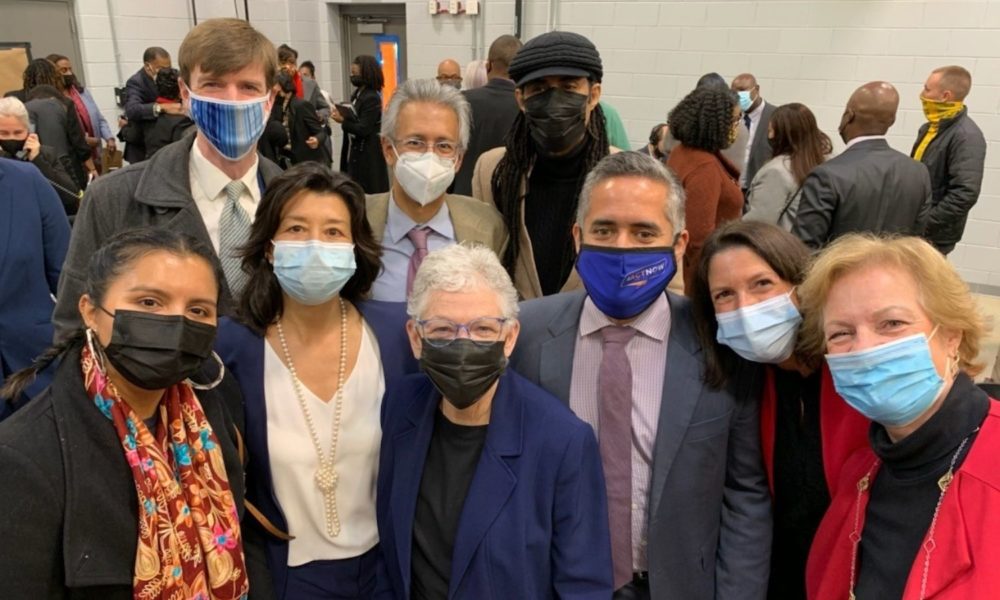I’m heart sore over the sudden and devastating losses from the recent tornadoes that tore through Kentucky and five other states. Scientists are seeing changes in the location and frequency of tornado outbreaks, including the potential for clusters of, or stronger tornadoes. The frightening truth is that extreme weather events are only going to get more frequent as baked-in climate impacts come home to roost in the next few years.
It’s one of many reasons I’m convinced that we’re at one of the most important decision points for humanity. In the United States, historically the world’s leading carbon emitter, we’ve been able to get on the right side of justice this year to advance two exceptional pieces of legislation that could set us up for transformative and equitable climate action: the Infrastructure Investment and Jobs Act, which was signed into law in November, and the Build Back Better Act which currently remains stuck in the Senate.
In the recent months, I’ve heard a lot of skepticism asking how we are going to afford these pieces of legislation. While they are expensive, regular taxpayers with annual earnings under $400,000 won’t pay anything additional for them. And certainly, doing nothing about the climate crisis will cost us far more.
By comparison, any day now, the Senate will approve $778 billion in funding for the US military for this fiscal year. That’s billions more than the Pentagon sought. It’s four times the size of Biden’s Build Back Better Act, which comes to around $175 billion a year. If you want some scientifically researched reporting about this spending, see UCS Senior Writer Elliott Negin’s Scientific American article on the subject.
Reasons for hope
This week, I got a big boost of inspiration and hope that only convinced me more about rapid transformation we need. I travelled to Brandywine, Maryland to help highlight the game-changing impact of electrifying our transportation system. At a Department of Public Works garage with an electric Ford F-150 pickup truck and Chevy Bolt as backdrops, I got to meet Vice President Kamala Harris, Secretary of Energy Secretary Jennifer Granholm, and White House Climate Advisor Gina McCarthy .
I was buoyed by the inspiration and innovation spotlighted at the event which was joined by civic leaders, elected officials, and representatives of many nonprofit organizations working on climate and energy issues (some of whom are pictured with me in the snapshot above). The main message: the science and technology already exist to make a swift transformation to clean transportation possible.
Electric vehicles are cheaper to maintain, healthier to drive, and the shift to them and a clean grid offers the opportunity to boost our economy with new green manufacturing and good paying union jobs. According to one study, a federal investment of $274 billion into clean vehicles and infrastructure could reap 11 million job-years’ worth of good paying US employment. It seems to me to be a worthy return on our investment.
In Maryland, much of the focus was on Vice President Harris’s efforts to transform our country’s fleet of school buses which actually make up the nation’s largest form of mass transit, transporting more than 25 million children to their homes and schools every day. Not only do our current diesel school buses pump polluted air into the lungs of our young people, they collectively add more than 5 million tons of carbon emissions each year that we could dramatically reduce by switching to an electric fleet. It’s just one of many big steps we need to make quickly and decisively to improve the health and well being of our children and our future.
Here are four of the others:
- First, we need to expand the network of charging stations. The infrastructure bill includes some $7 billion to create a national EV charging network, so that’s a good start.
- Second, we need to insure that electric vehicles will be affordable and accessible to all. That’s why legislation providing up to $12,500 in dealer incentives is so important.
- Third, we need to build out the electric vehicle supply chain in the United States, offering a pathway to providing many good, green union jobs that will benefit the nation for many years to come.
- And finally, we need to make sure that, wherever electric vehicles are plugged in, the electricity is produced by clean, renewable sources.
These are no small tasks. But the benefits to our economy, to our environment, and to future generations will be enormous. And, despite the hefty outlay, the repeated devastation wrought by climate-driven extreme weather events regularly reminds us that the cost of inaction is incalculably greater.

